Orchids are among the most elegant, exotic, and enchanting plants you can grow. Known for their graceful blooms, delicate fragrance, and long-lasting flowers, orchids bring a sense of luxury and serenity to any home or garden. However, these tropical beauties have a reputation for being tricky to care for — but with the right knowledge, you can easily grow thriving, blooming orchids year after year.
In this complete guide, we’ll uncover how to care for orchids successfully, covering everything from light and watering needs to natural feeding tips, repotting, and common problems with natural solutions.
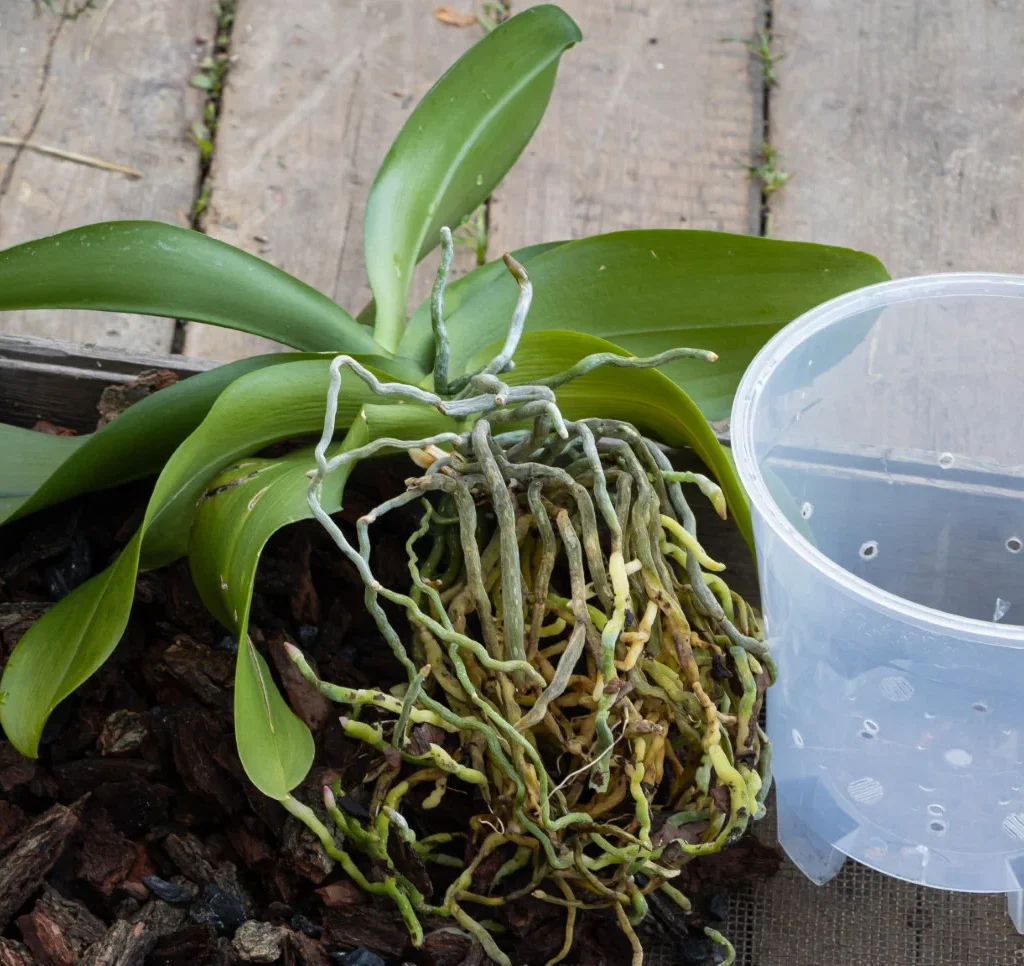
Why Choose Orchids?
Orchids are more than just pretty flowers — they offer several wonderful benefits:
- Long-lasting blooms: Orchid flowers can stay in bloom for several months.
- Air-purifying properties: They help improve indoor air quality.
- Stress-reducing beauty: Their calming appearance enhances mental well-being.
- Variety of species: With over 25,000 known species, you can find orchids in various shapes, sizes, and colors to match your décor.
Whether you’re a seasoned gardener or a beginner, with a little attention and care, orchids can become a rewarding addition to your plant collection.
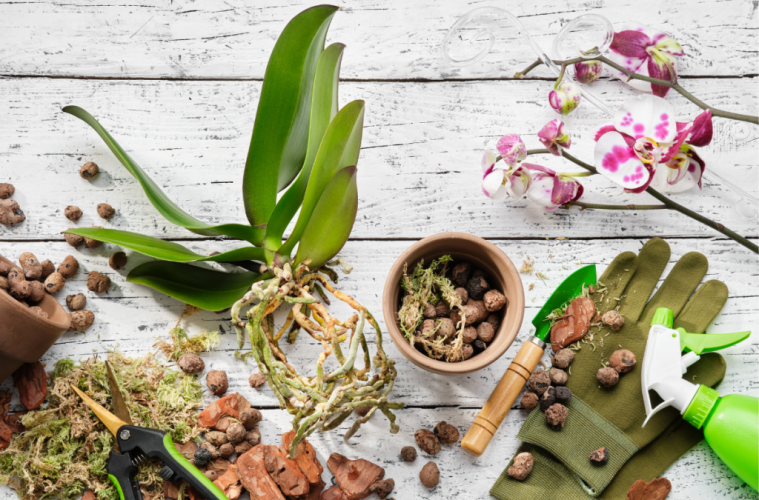
Understanding Orchids’ Natural Environment
To care for orchids properly, it helps to understand their natural habitat. Orchids are mostly epiphytic plants, meaning they grow on trees in the tropics, with their roots exposed to air and frequent rainfall. This means their care routine is quite different from typical houseplants.
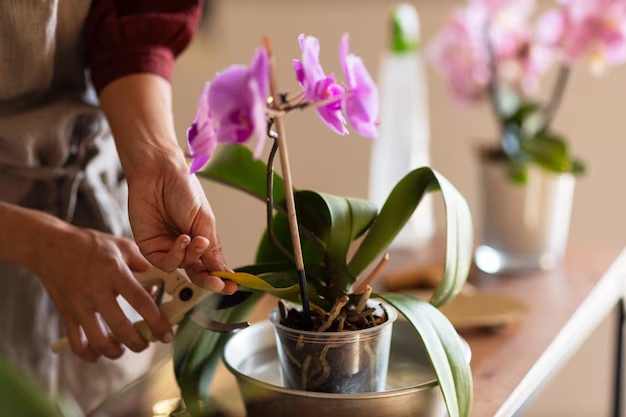
Ideal Growing Conditions for Orchids
1. Light Requirements
Orchids need bright, indirect light to thrive.
- Ideal indoor spot: Near an east- or south-facing window with filtered light.
- Avoid direct harsh sun, especially in the afternoon, as it can scorch leaves.
- If natural light is limited, consider using grow lights.
Tip: If your orchid’s leaves turn dark green, it needs more light. Yellowish-green leaves indicate good light exposure.
2. Temperature and Humidity
Orchids prefer moderate temperatures and high humidity, similar to their tropical origins.
- Daytime temperatures: 65°F to 80°F (18°C to 27°C)
- Nighttime temperatures: 60°F to 65°F (16°C to 18°C)
- Maintain humidity levels around 50-70%.
Natural ways to increase humidity:
- Use a humidity tray (a shallow dish filled with water and pebbles).
- Group orchids together to create a microclimate.
- Lightly mist the plants in the morning to avoid overnight dampness.
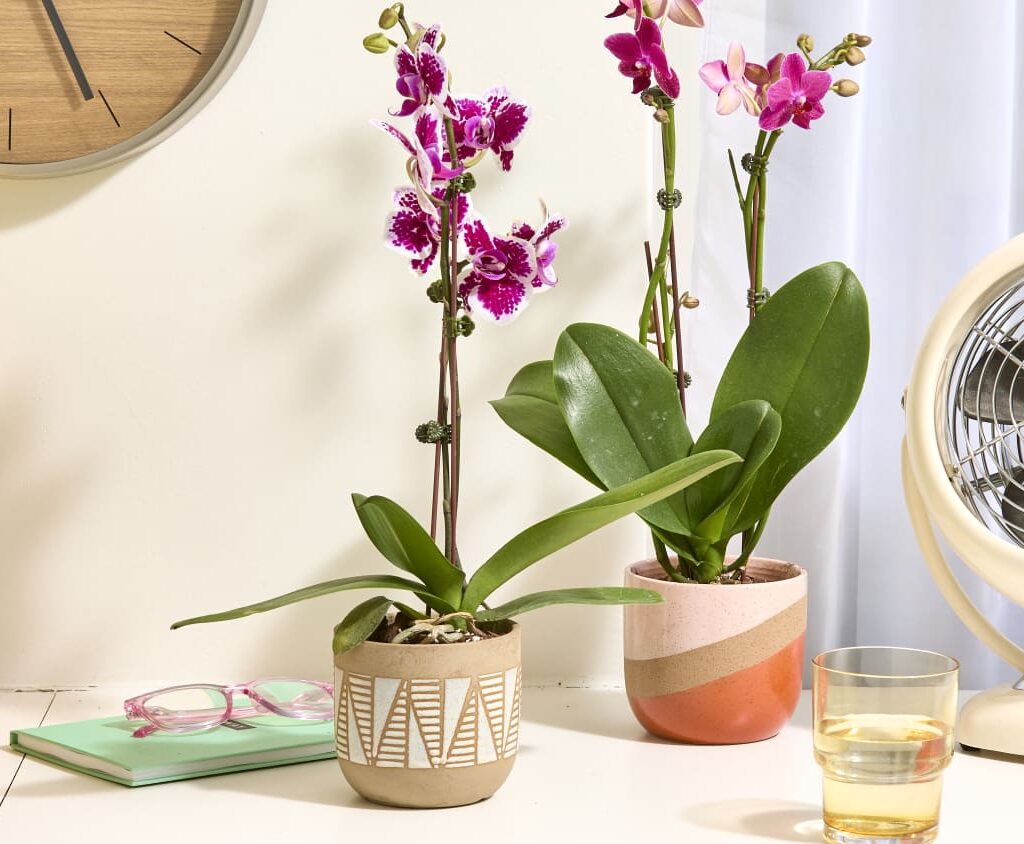
Best Soil and Potting Medium for Orchids
Unlike regular houseplants, orchids need a well-aerated medium that mimics their native environment.
Best natural orchid potting mixes:
- Fir bark
- Coconut husk chips
- Sphagnum moss
- Charcoal
- Perlite
Avoid traditional soil, as it retains too much moisture and suffocates orchid roots.
Tip: Use clear, perforated plastic pots or terracotta containers for better drainage and to monitor root health.
How to Water Orchids Properly
Orchid watering can be tricky — they hate both overwatering and drying out completely.
Natural Watering Tips:
- Water thoroughly, then let excess drain completely.
- Allow the potting medium to dry out slightly before the next watering.
- In warmer months: Water every 5-7 days.
- In cooler months: Water every 10-14 days.
- Use room-temperature rainwater or filtered water for best results.
Tip: Never let your orchid sit in standing water. It causes root rot.
Natural Fertilizing for Orchids
Orchids are light feeders but benefit from regular, gentle feeding during their active growth period (spring to early fall).
Best natural fertilizers:
- Diluted fish emulsion
- Compost tea
- Seaweed extract
Feed your orchid every 2-4 weeks during the growing season, and reduce feeding in winter.
Tip: Always water your orchid before applying fertilizer to avoid root burn.
How to Prune and Maintain Orchids
Proper pruning keeps your orchid healthy and encourages new blooms.
After flowering:
- Cut the flower spike just above a visible node (bump) if it’s still green — it might rebloom.
- If the spike turns brown, cut it off at the base.
General maintenance:
- Remove dead or yellowing leaves.
- Wipe leaves gently with a damp cloth to remove dust and pests.
- Check for soft or mushy roots and trim them off with sterilized scissors.
Repotting Orchids
Repot orchids every 1-2 years, or when the potting medium breaks down and roots outgrow the container.
How to Repot:
- Gently remove the orchid from its pot.
- Trim dead roots (black, mushy ones).
- Replace old medium with fresh orchid mix.
- Water lightly after repotting and avoid fertilizing for a couple of weeks.
Tip: Best done in spring after flowering or when new roots appear.
Natural Pest Control for Orchids
Though generally resilient, orchids can occasionally attract pests like mealybugs, spider mites, or aphids.
Natural Remedies:
- Neem oil spray: Mix 1 tsp neem oil with 1 liter of water and a drop of natural soap. Spray affected areas.
- Insecticidal soap: A mild, organic option for infestations.
- Regularly inspect leaves and undersides for signs of pests.
Tip: Isolate affected plants to prevent spreading.
Common Orchid Care Mistakes and How to Avoid Them
| Problem | Natural Solution |
|---|---|
| Wrinkled, shriveled leaves | Underwatering or root rot. Check roots and adjust watering routine. |
| Yellow leaves | Too much direct sun or overwatering. Adjust light and watering. |
| Bud drop | Sudden temperature or humidity changes. Maintain stable conditions. |
| No blooms | Insufficient light. Move to a brighter location with filtered light. |
Orchid Blooming Tips
To encourage orchids to rebloom:
- Ensure they get adequate bright, indirect light.
- Maintain a slight temperature drop at night (about 10°F).
- Provide consistent humidity.
- Feed lightly with organic fertilizers during the growing season.
- Trim old flower spikes properly.
Patience is key — some orchids take several months before blooming again.
Benefits of Caring for Orchids Naturally
Growing orchids with natural methods ensures:
- Healthier, long-living plants.
- Cleaner indoor air without chemical residues.
- Environmentally friendly practices.
- Safer conditions for pets, children, and beneficial insects.
Final Thoughts
Orchids may seem delicate, but with a basic understanding of their needs, you can easily care for them successfully at home. Focus on bright indirect light, proper humidity, well-draining orchid mix, gentle natural watering, and organic feeding to keep them thriving.
With consistent care and a little patience, your orchid will reward you with stunning, long-lasting blooms and a calming presence in your living space. Whether you’re a novice plant parent or a seasoned gardener, orchids are a timeless, elegant choice worth mastering.

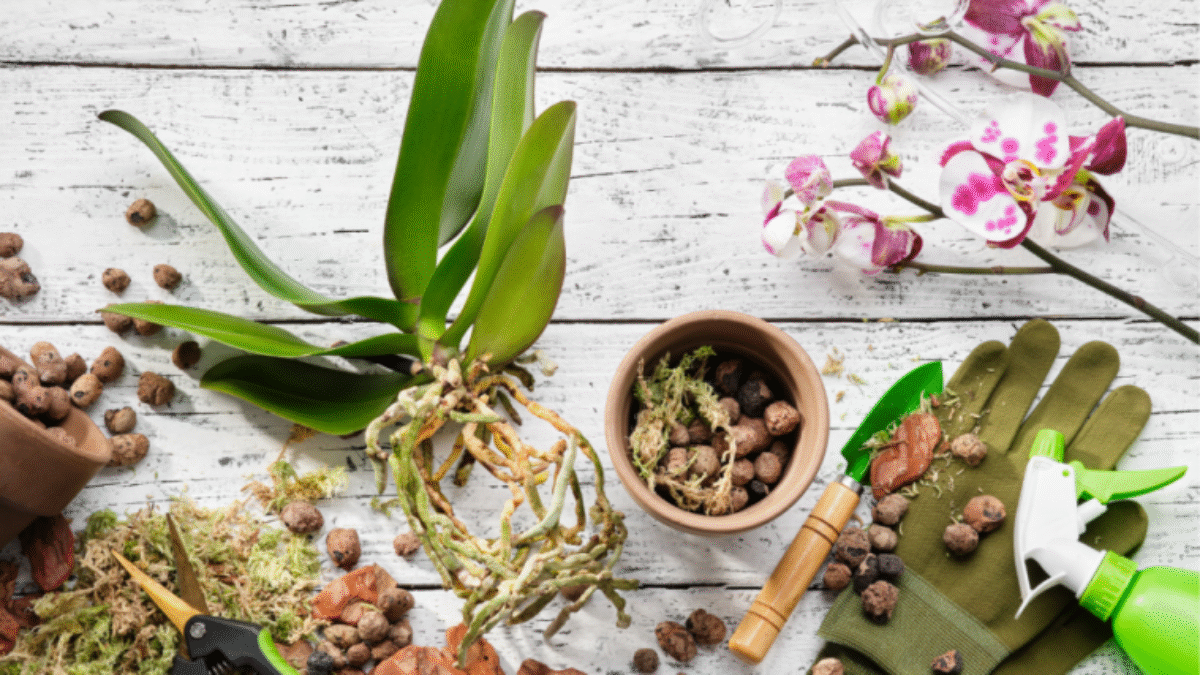




Leave A Comment